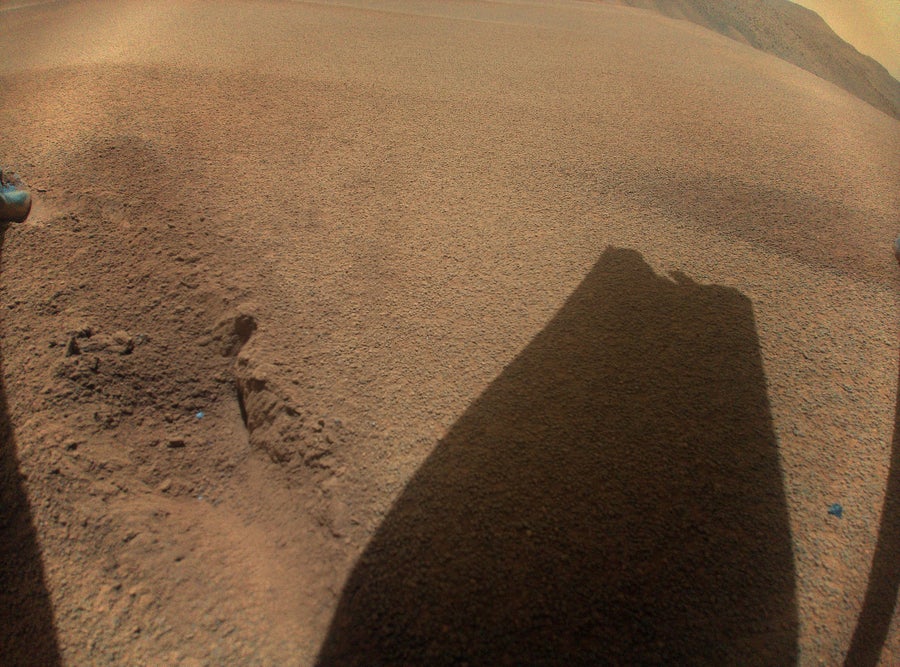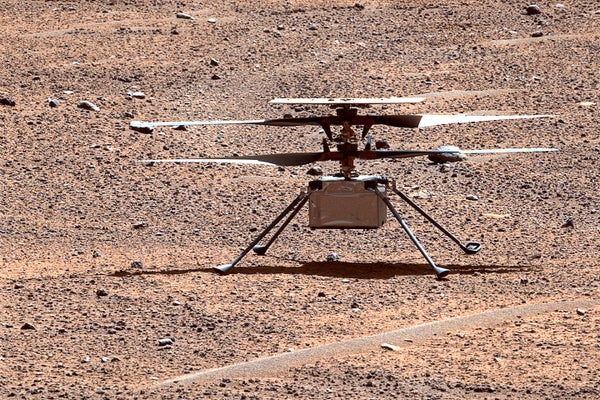January 25, 2024
4 min read
NASA’s enterprising Mars helicopter and its remarkable 72 flights offered a new vision of planetary exploration
Perseverance Checks Out Ingenuity on Aug. 2, 2023.
After nearly three years soaring through the red skies of Mars, NASA’s Ingenuity helicopter is permanently grounded.
The agency launched the little four-pound chopper in July 2020, with Ingenuity hitchhiking to Mars in the belly of NASA’s Perseverance rover. The tissue box-size craft made its first-ever flight in April 2021. Launched as a month-long technology demonstration, the helicopter was built to make a mere five hops to prove that powered flight is possible on the Red Planet.
Instead, Ingenuity endured for nearly 1,000 Martian days, becoming a long-term scout for the car-sized Perseverance, giving planetary scientists a bird’s-eye view of the terrain they wanted to explore. In the process, the little aircraft inspired scientists, engineers and space fans to imagine a new future, one in which helicopters regularly take to the skies of the Red Planet and beyond.
“It’s almost an understatement to say that it has surpassed expectations,” Lori Glaze, director of NASA’s Planetary Science Division, said during a press conference on January 25. “Ingenuity absolutely shattered our paradigm of exploration, introducing this new dimension of aerial mobility.”
NASA ended the mission after evidence that Ingenuity was no longer able to fly after at least one of its rotor blades got damaged during touchdown on its most recent and 72nd flight on January 18. That flight had been designed as a short vertical flight to test Ingenuity’s systems after its previous flight ended unexpectedly early. But during the little test hop, communications shut down early, signaling an issue.

The helicopter’s handlers reestablished communication with the little chopper on January 20, and they had hoped to get Ingenuity flying again. But an image taken after that final flight shows the shadow of a battered rotor tip—one that’s lost perhaps a quarter of its length—against the reddish Martian sand. The damage suggests the rotor hit the surface on the way down.
“Going through a blade strike for a helicopter is typically the end,” Teddy Tzanetos,…
Click Here to Read the Full Original Article at Scientific American Content: Global…

